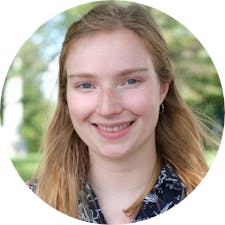Vermont has been ranked number one overall for 2019 in Bloomberg's annual report on gender equality. This is the third year in a row that Vermont has led the rankings in the yearly report. The state was also ranked number 6 for women in leadership, and received high scores in the report’s five categories -- pay ratio by gender, female labor force participation, college degree attainment, health coverage and women in poverty.
Rep. Linda Sullivan, D-Dorset, attributes this ranking to the priorities of the state legislature. “With a strong focus from the legislature on gender equality,” she said, “Vermont will be driven to be a leader in this area.”
According to the National Conference of State Legislatures, Vermont’s legislature is 39.4 percent female compared to 28.7 percent nationwide. Vermont boasts 71 female members to 109 male members. The legislature recently passed a bill requiring employers to pay sick leave, and is considering a bill allowing paternity leave -- two pieces of legislation that are aimed at increasing gender equality.
“The legislature is working on bills to provide higher livable wages,” said Sullivan, “as well as to work through issues of providing other benefits to families.”
Representative Mollie Burke from Brattleboro and other policymakers recently proposed a resolution which designates April 2, 2019 as Equal Pay Day, with a proclamation signed by Governor Scott that same day. Advocates for equal pay wore red during legislative sessions.
Sullivan also acknowledged that there are challenges in passing legislation to eliminate the gender-pay gap. “However, these bills need to be thoroughly vetted and weighed against the costs to provide the services,” she said, “so while there are projects in the works, the roadmap to getting there must be well thought-out so as not to create barriers for the very populations they are intended to assist.”

In the same report, Vermont was ranked 6 in female leadership.
Closing the wage gap would have many benefits for Vermont as a whole. Equal pay reduces poverty, adds money to the overall economy and attracts families to Vermont.
According to a report issued by Change the Story (CTS), a Vermont-based organization working towards gender equality, Vermont does well in the categories considered by Bloomberg. Women have a pay ratio gap of 16 cents, compared to a 20 cent wage gap nationally. For labor force participation, 66 percent of women work in Vermont’s labor force, compared to 58 percent of women nationally.
“Education is a key area of focus,” claimed Sullivan. In terms of education, 33 percent of women earn a bachelor’s degree in Vermont, six points higher than the national average for women’s education.
One of the indicators in which Vermont does poorly is rate of women in poverty, in which Vermont is ranked 17 with a rate of 12 percent. The CTS also found that women are significantly more likely to live in poverty than men, and 3 percent of Vermont women who work full-time do not make enough to cover basic living expenses.
It’s also important to note that the Bloomberg report does not break down statistics in terms of race. For example, Vermont ranked well for the gender pay gap, yet this gap is much larger for women of color. As reported by the Vermont Commission on Women, there is a 46 percent gap for Hispanic and Latina women, a 42 percent gap for American Indian and Alaska Native women,a 40 percent gap for Native Hawaiians and Pacific Islander women, a 37 percent gap for African American women, and a 15 percent gap for Asian women.
The CTS found that in Vermont, 13.4 percent of all families with minor children live in poverty, and that this number increases to 37 percent if a women is the single head of the household. CTS also found that the wage gap of women with dependant children increases to 26 percent, as compared to the 30 percent for women nationally.
“Middlebury does well in gender equality, but there are always ways to improve,” said Ellie Broeren ’22, an active member of Feminist Action Middlebury (FAM). The college currently boasts a 48.2 to 51.8 male to female ratio for students, with a staff ration of 49.5 to 50.5 (male to female). Still, such statistics fail to account for some of Middlebury’s underlying problems.
“What comes to mind for me is the lack of transparency about contraception and sexual health on campus, as this is an issue that largely affects women,” said Boeren. To combat this, FAM has created a website at go/sexysources that provides information on sexual health and are currently trying to get Plan B available at Middlebury Express.
Despite the issues in gender equality that are still prevalent in Vermont and at Middlebury College, Sullivan reminds us to also celebrate our successes. “With a strong focus from the legislature on gender equality,” she says, “Vermont [has been] driven to be a leader in this area.”

Lucy Townend '22 is a Managing Editor alongside Abigail Chang.
She previously served as a senior section editor, a local editor, and a copy editor.
Townend is majoring in International Politics and Economics, studying French throughout her years at Middlebury and is planning on completing a thesis focused on income inequality and regime change.
This previous summer, Townend interned as a private banking analyst at a mid-sized bank in Chicago and plans to continue her work there after graduation.




